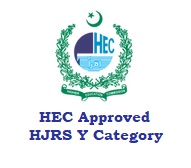Effects of road infrastructure development on residential property value and land development shifts in a peri-urban area of Karachi, Pakistan
DOI:
https://doi.org/10.47264/idea.nasij/4.1.7Keywords:
M-9 Motorway, Bahria Town Karachi (BTK), road infrastructure development, land development, property value, mega residential projectAbstract
The introduction of road infrastructure development projects often triggers expectations of shifts in property values. Extensive research has already been conducted regarding the impact of such projects on property values and land development in developed regions. However, there is a research gap when it comes to developing countries like Pakistan. Therefore, this study aimed to investigate the influence of the road infrastructure development project, the M-9 Motorway, on residential property values and land development in a mega residential project in Bahria Town Karachi (BTK), Pakistan. This study employs a mixed-methodology approach, incorporating qualitative methods (interviews) and quantitative analysis (questionnaire surveys and property data analysis). Statistical tools such as Statistical Package for Social Sciences (SPSS), the Pearson correlation coefficient, and the Chi-square goodness of fit test were used for correlation and hypothesis testing. This research reveals that proximity to a major road infrastructure project directly impacts property purchase prices, rents, and land development in BTK, either positively or negatively. The obtained results align with both expectations and the existing literature. Although these findings should not directly apply to other locations and contexts, they can be considered suggestive indicators for planning purposes.
References
Aslam, B., Maqsoom, A., Khalid, N., Ullah, F., & Sepasgozar, S. (2021). Urban overheating assessment through prediction of surface temperatures: A case study of Karachi, Pakistan. ISPRS International Journal of Geo-Information, 10(8), 539. https://doi.org/10.3390/ijgi10080539 DOI: https://doi.org/10.3390/ijgi10080539
Aldagheiri, M. (2009). The Role Of The Transport Road Network InThe Economic Development Of Saudi Arabia. WIT Transactions on The Built Environment, 107, 275–285. https://doi.org/10.2495/UT090251 DOI: https://doi.org/10.2495/UT090251
Bryzhko, V. G., & Bryzhko, I. V. (2019). Comprehensive assessment of the impact of road infrastructure development in a rural municipal area (Russia). Revista Espacios, 40(37), 1-19. https://www.revistaespacios.com/a19v40n37/19403719.html
Beuran, M., Gachassin, M., & Raballand, G. (2015). Are There Myths on Road Impact and Transport in Sub-Saharan Africa? Development Policy Review, 33(5), 673–700. https://doi.org/10.1111/DPR.2015.33.ISSUE-5 DOI: https://doi.org/10.1111/dpr.12125
Cobbinah, P. B., Erdiaw-Kwasie, M. O., & Amoateng, P. (2015). Africa’s urbanisation: Implications for sustainable development. Cities, 47, 62-72. https://doi.org/10.1016/j.cities.2015.03.013 DOI: https://doi.org/10.1016/j.cities.2015.03.013
Chugtai, A. (2021). Why did the Court agree to Bahria Town’s Settlement Offer? Dawn. https://www.dawn.com/news/1474734
Datta, A. (2016). Introduction: Fast cities in an urban age. In A. Datta, & A. Shaban (eds.), Mega-urbanization in the global south (pp. 13-40). Routledge. DOI: https://doi.org/10.4324/9781315797830-8
Doan, P., & Oduro, C. Y. (2012). Patterns of population growth in peri?urban Accra, Ghana. International Journal of Urban and Regional Research, 36(6), 1306-1325. https://doi.org/10.1111/j.1468-2427.2011.01075.x DOI: https://doi.org/10.1111/j.1468-2427.2011.01075.x
News Desk. (2020). Bahria Town opens M9 interchange for public.The Express Tribune. https://tribune.com.pk/story/2157624/bahria-town-opens-m9-interchange-public
Deng, T. T., & Nelson, J. D. (2010). The impact of Bus Rapid Transit on land development: a case study of Beijing, China. World Academy of Science, Engineering and Technology, 66, 1196-1206. https://doi.org/10.5281/zenodo.1083021
Erkul, M., Yitmen, I., & Çelik, T. (2016). Stakeholder engagement in mega transport infrastructure projects. Procedia Engineering, 161, 704-710. https://doi.org/10.1016/j.proeng.2016.08.745 DOI: https://doi.org/10.1016/j.proeng.2016.08.745
Gatzlaff, D. H., & Smith, M. T. (1993). The impact of the Miami Metrorail on the value of residences near station locations. Land Economics, 66(1), 54-66. http://www.jstor.org/stable/pdfplus/3146278 DOI: https://doi.org/10.2307/3146278
Gachassin, M., Najman, B., & Raballand, G. (2010). The impact of roads on poverty reduction: a case study of Cameroon. World Bank Policy Research Working Paper, No. 5209. https://ssrn.com/abstract=1559726
Gibson, J., & Rozelle, S. (2003). Poverty and access to roads in Papua New Guinea. Economic Development and Cultural Change, 52(1), 159-185. https://doi.org/10.1086/380424 DOI: https://doi.org/10.1086/380424
Holvad, T., & Preston, J. (2005). Road transport investment projects and additional economic benefits. 45th Congress of the European Regional Science Association, Amsterdam, Netherlands. https://hdl.handle.net/10419/117687
Jedwab, R., & Moradi, A. (2016). The permanent effects of transportation revolutions in poor countries: evidence from Africa. Review of Economics and Statistics, 98(2), 268-284. https://doi.org/10.1162/REST_a_00540 DOI: https://doi.org/10.1162/REST_a_00540
Khanani, R. S., Adugbila, E. J., Martinez, J. A., & Pfeffer, K. (2021). The impact of road infrastructure development projects on local communities in peri-urban areas: the case of Kisumu, Kenya and Accra, Ghana. International Journal of Community Well-Being, 4(1), 33-53. https://doi.org/10.1007/S42413-020-00077-4 DOI: https://doi.org/10.1007/s42413-020-00077-4
Khan, S., Akhtar, A. A., & Bodla, S. (2014). Bahria Town: A military-related real estate venture. In S. Khan, A. S. Akhtar, A., & S. Bodla (eds.) The military and denied development in the Pakistani Punjab: an eroding social consensus (pp. 95-104). Anthem Press.
Karim, S. (2022). Impacts of Bahria Town Karachi’s destructive ways of displacing the locals to make Karachi a mega city. Habib University. https://hira.habib.edu.pk/jspui/handle/123456789/482
Luo, J., Wang, G., Li, G., & Pesce, G. (2022). Transport infrastructure connectivity and conflict resolution: a machine learning analysis. Neural Computing and Applications, 34(9), 6585–6601. https://doi.org/10.1007/S00521-021-06015-5 DOI: https://doi.org/10.1007/s00521-021-06015-5
Li, Y., & Rama, M. (2023). Private cities: outstanding examples from developing countries and their implications for urban policy. World Banking Group. https://doi.org/10.1596/978-1-4648-1833-2 DOI: https://doi.org/10.1596/978-1-4648-1833-2
Mysorewala, R., (2021). Deconstructing urban utopias: the case of Bahria Town, Pakistan. Master’s Dissertation, The University of Texas at Austin. http://dx.doi.org/10.26153/tsw/17401
Mackett, R. L., & Edwards, M. (1998). The impact of new urban public transport systems: will the expectations be met? Transportation Research Part A: Policy and Practice, 32(4), 231–245. https://doi.org/10.1016/S0965-8564(97)00041-4 DOI: https://doi.org/10.1016/S0965-8564(97)00041-4
Murray, M. J. (2016). Frictionless utopias for the contemporary urban age: Large-scale, master-planned redevelopment projects in urbanizing Africa. In A. Datta, & A. Shaban (eds.), Mega-Urbanization in the Global South (pp. 43-65). Routledge. DOI: https://doi.org/10.4324/9781315797830-10
Mehta, M. G. (2016). Ahmedabad: the middle class megacity. South Asian History and Culture, 7(2), 191–207. https://doi.org/10.1080/19472498.2016.1143668 DOI: https://doi.org/10.1080/19472498.2016.1143668
Manahil Estate. (2014). Master Plan Map of Bahria Town Karachi Project Available Online. https://manahilestate.com/master-plan-map-bahria-town-karachi-project-available-online/
Nazir, H., & Yousuf, M. S. (2021). Bahria Town Karachi: A Case Study In Urban Development. Journal of Research in Architecture and Planning, 30(1), 51-61. https://www.doi.org/10.53700/jrap3012021 DOI: https://doi.org/10.53700/jrap3012021_6
Pakistan Property Services – Real Estate Marketing Agency in Pakistan. (2021). Bahria Town Karachi M-9 Interchange - Location & Development. https://pakistanpropertyservices.com.pk/bahria-town-karachi-M-9-interchange/
Paraskevadakis, D., Bury, A., Wang, J., Ren, J., Bonsall, S., & Jenkinson, I. (2016). The impact of transport infrastructure projects on sustainable development within a major logistics gateway in North West England. Logistics & Sustainable Transport, 7(1), 28–40. https://doi.org/10.1515/JLST-2016-0003 DOI: https://doi.org/10.1515/jlst-2016-0003
Pradhan, R. P., & Bagchi, T. P. (2013). Effect of transportation infrastructure on economic growth in India: The VECM approach. Research in Transportation Economics, 38(1), 139–148. https://doi.org/10.1016/j.retrec.2012.05.008 DOI: https://doi.org/10.1016/j.retrec.2012.05.008
Parker, T., McKeever, M., Arrington, G. B., Smith-Heimer, J., & Brinckerhoff, P. (2002). Statewide transit-oriented development study: factors for success in California. Final Report, US Department of Transportation. https://rosap.ntl.bts.gov/view/dot/38272
Ryan, J., & Montgomery, H. (2005). Terrorism and the medical response. New England Journal of Medicine, 353(6), 543-545. https://doi.org/10.1056/NEJMP058177 DOI: https://doi.org/10.1056/NEJMp058177
Redding, S. J., & Turner, M. A. (2015). Transportation costs and the spatial organization of economic activity. Handbook of Regional and Urban Economics, 5, 1339-1398. https://doi.org/10.1016/B978-0-444-59531-7.00020-X DOI: https://doi.org/10.1016/B978-0-444-59531-7.00020-X
Shaheen, U., Khan, S.B., & Aziz, S. (2016). Manipulative power of Pakistani real state print advertisement: A critical discourse study. Journal of Social Sciences, 8(2), 267-283. https://gcuf.edu.pk/pages_data/journals/social-sciences/JSS-Vol-8-Issue-2.pdf#page=273
Smith, J. J., & Gihring, T. A. (2006). Financing transit systems through value capture: an annotated bibliography. American Journal of Economics and Sociology, 65(3), 751–786. https://doi.org/10.1111/j.1536-7150.2006.00474.x DOI: https://doi.org/10.1111/j.1536-7150.2006.00474.x
Tian, L. (2006). Impacts of transport projects on residential property values in China: Evidence from two projects in Guangzhou. Journal of Property Research, 23(4), 347-365. https://doi.org/10.1080/09599910601095365 DOI: https://doi.org/10.1080/09599910601095365
UPN. (2020). Opening Ceremony of Bahria Town newly build interchange M-9. https://www.ourupn.com/opening-ceremony-of-bahria-town-interchange-newly-build/
Sumaira, Z. (2018, 14-22 July). Impact of New Urban Schemes on Natural streams of Karachi. In 42nd COSPAR Scientific Assembly, Pasadena, California, USA. https://ui.adsabs.harvard.edu/abs/2018cosp...42E3793Z/abstract
Zaman, F., & Ali, N. S. (2016, April 18). Bahria Town Karachi: Greed unlimited - Pakistan. Dawn. https://www.dawn.com/news/1252809
Downloads
Published
How to Cite
Issue
Section
License
Copyright (c) 2023 Humaira Nazir, Reena Majid Memon, Muhammad Shahzad Yousuf, Maryum Sajid Raja

This work is licensed under a Creative Commons Attribution-NonCommercial 4.0 International License.
Please click here for details about the Licensing and Copyright policies of NASIJ.












